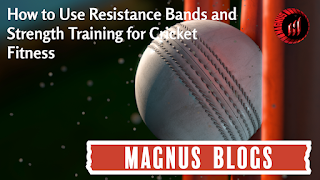Toe Shock: How Repeated Ball Impact on Bat Toe Affects Longevity
Cricket fans love watching a batsman dig out a lethal yorker, but there's an unsung hero in that defensive move — the toe of the bat. Often overlooked, the bat’s toe takes brutal punishment, especially during low drives, mistimed blocks, and relentless yorkers. But what happens beneath the surface of these repeated impacts? This blog explores the hidden wear known as “Toe Shock,” and how it gradually affects your bat’s performance and lifespan.
What is "Toe Shock"?
"Toe Shock" refers to the accumulated structural stress that a bat’s toe endures over time. While bats are designed to absorb impact, the toe is not the sweet spot — it’s more brittle and less resilient than the middle. Repeated ball strikes in this area lead to:
-
Microcracks
-
Compressed willow fibers
-
Separation of toe layers
-
Internal warping
This degradation can severely affect bat responsiveness, balance, and longevity, even if the damage isn’t immediately visible.
Common Scenarios That Cause Toe Shock
-
Facing Yorkers Frequently
Fast bowlers targeting the base of your bat can cause repetitive trauma, especially on dry, hard pitches. -
Low Bounce Pitches
When bounce is unpredictable, batters tend to make contact closer to the toe — increasing shock zones. -
Tapping the Pitch
Players often tap their bats repeatedly to judge bounce or stay in rhythm. Over time, this repeated contact adds up. -
Wet Outfields
Moisture seeps into an exposed toe (especially if unprotected), weakening the wood and making it prone to cracks.
The Hidden Toll on Your Bat
While external toe damage — like chips or cracks — is easy to spot, internal stress fractures are much harder to detect. These can result in:
-
Loss of Power Transfer: Energy from your shots doesn’t carry through as efficiently.
-
Reduced Rebound Effect: The “ping” diminishes, particularly in straight drives.
-
Compromised Toe Integrity: Future impacts do more damage, compounding the issue.
Over time, a bat affected by persistent toe shock may develop toe splits, delamination, or even full breakage.
How to Prevent Toe Shock
-
Use a Toe Guard
A rubber toe guard cushions each hit and shields the bat from moisture. -
Avoid Unnecessary Ground Tapping
While some tapping is habitual, avoid hard taps on rough or cement surfaces. -
Dry After Use
Wipe off any moisture and keep your bat in a dry place post-match. -
Oil the Toe Region
Regular oiling with linseed oil strengthens the fibers and adds a moisture barrier. -
Rotate Practice Bats
Use an older or secondary bat during nets to preserve your match bat from toe wear.
When to Worry
Here are a few warning signs of serious toe shock damage:
-
Visible splits or cracking around the toe
-
Rattling sound from the base
-
Loss of shot power, especially for low drives
-
Toe chipping despite no recent hard knocks
Cricket bat types, Cricket equipment in usa, Cricket equipment store, Cricket gloves, Cricket helmet, Cricket kit bags, Cricket retailers, Durable cricket gloves, English willow bats, Icc approved helmets., Kashmir willow cricket bat, Latest kashmir willow bat
.png)
.png)
.png)

Comments
Post a Comment